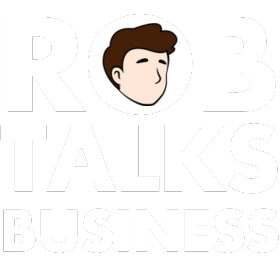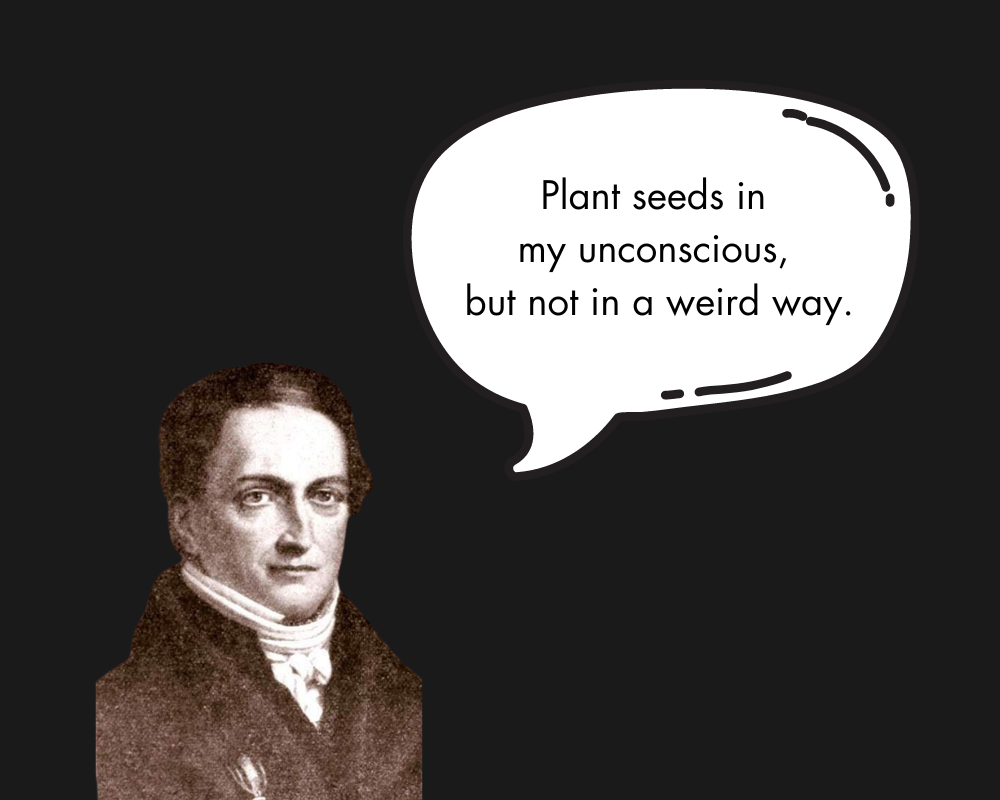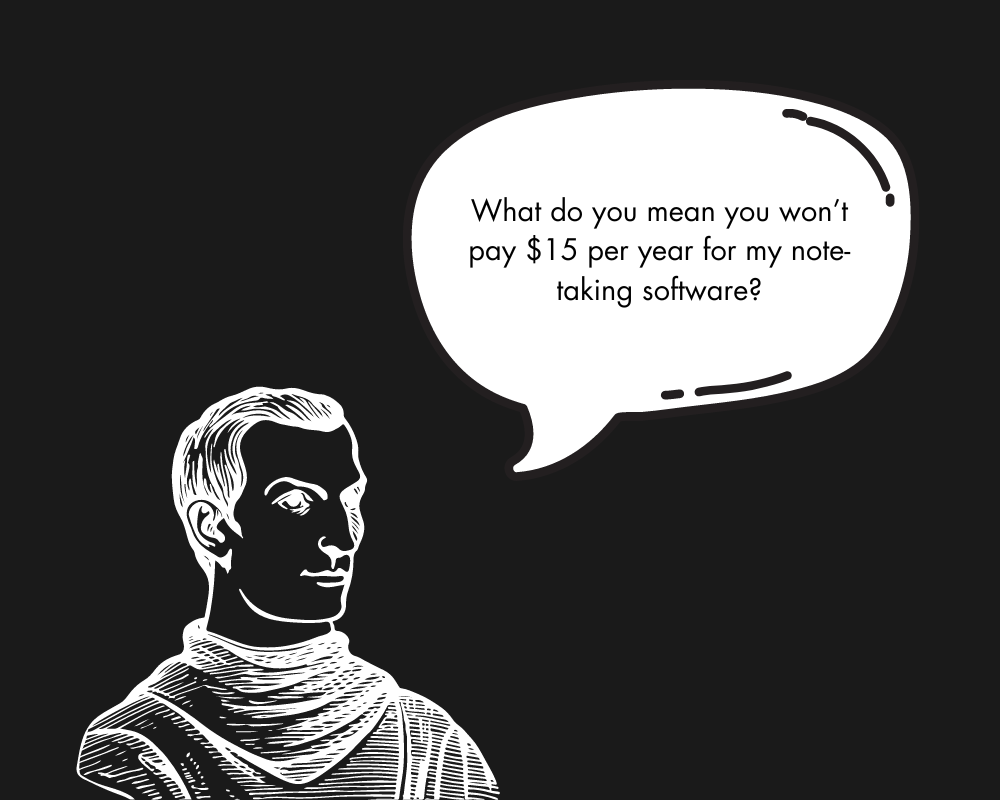"The mind is not an empty vessel to be filled, but a complex system of ideas interacting with one another." - Johann Herbart
Mastering the Dynamics of the Mind: Lessons from Herbart in Marketing Strategy
Johann Herbart, the 19th-century German philosopher, embarked on an intricate study of the mind. He was fascinated by the flood of thoughts, memories, and emotions that course through our consciousness.
How, he wondered, do we not drown in this torrent of ideas?
The answer, he discovered, lay in the mind’s ability to organize and categorize these thoughts, deciding which rise to consciousness and which sink below the surface.
Herbart’s insight into the mind’s architecture was revolutionary for his time. He proposed that ideas, which he called Vorstellungen - mental images, emotions, and thoughts - are not passive, but dynamic forces.
These forces are constantly in motion, attracting or repelling one another. Ideas that resonate with each other fuse, forming more complex thoughts, while those that clash weaken and sink below the "threshold of consciousness," where they remain dormant but not destroyed.
Long before Herbart, the philosopher Gottfried Leibniz had touched on this idea of hidden perceptions, calling them petite perceptions.
These faint impressions, existing outside our immediate awareness, could be recalled later, suggesting that the mind is always absorbing information, even when we are not fully aware of it.
Herbart, however, went deeper.
He saw the unconscious not as a mysterious void but as a storage space for ideas that could not thrive in the light of active thought.
In doing so, Herbart laid the groundwork for understanding how ideas evolve and are managed within the psyche - an insight that Sigmund Freud would later seize upon in his psychoanalytic theories.
For marketers, Herbart’s exploration of the mind holds profound implications.
Crafting effective messages requires understanding how ideas work beneath the surface - how they attract, repel, and form lasting associations in the mind of your audience.
The Art of Aligning Ideas: Crafting Messages that Resonate
Your audience is not a blank slate waiting for your message.
They carry with them a complex web of pre-existing ideas, emotions, and beliefs.
To craft a message that sticks, you must align your brand’s message with the thoughts already residing in their minds.
Much like a skilled tactician, the successful marketer understands that a message must blend with the mental landscape of the audience.
When your message mirrors what they already think and feel, it doesn’t feel like an external force - rather, it merges with their own thoughts, creating a deeper, more lasting connection.
Take Apple as a prime example.
For decades, Apple has carefully crafted its brand message to align with its audience’s core values: simplicity, creativity, and innovation.
Apple doesn’t try to impose new ideas on its customers. Instead, it identifies what its audience already believes about technology - that it should empower rather than overwhelm - and fuses its message with these beliefs.
In doing so, Apple achieves something greater than brand recognition - it becomes part of its customers’ identity.
To Apple’s loyalists, owning an iPhone is not merely owning a device.
It is a statement of who they are.
This is the power of aligning ideas: your brand becomes woven into the fabric of your audience’s psyche, forming a connection that is both emotional and intellectual.
Avoiding Cognitive Dissonance: The Perils of Mixed Messaging
Herbart’s theory of ideas reveals what happens when concepts clash.
Conflicting ideas repel one another, and in marketing, this clash manifests as cognitive dissonance - the mental discomfort that arises when a brand’s message contradicts what the audience already believes or desires.
Cognitive dissonance is a silent killer of brand loyalty.
When your message disrupts the internal harmony of your audience’s thoughts, it creates friction. They instinctively reject the message, and the association between your brand and the positive ideas you’ve worked to cultivate begins to weaken.
Consider a luxury brand that suddenly starts promoting low-cost alternatives.
The audience that values this brand for its exclusivity and premium quality experiences cognitive dissonance. The contradiction dilutes their perception of the brand, and over time, it weakens the bond that once held them.
The lesson here is simple: stay aligned with your audience’s beliefs.
The moment you introduce a message that clashes with their internal worldview, you risk undermining the very connection you’ve built.
The Strategic Use of Dissonance: Filtering Your Audience
Yet, cognitive dissonance can be a weapon when used strategically.
There are times when it serves you to create friction - not to attract, but to repel.
By introducing a message that creates dissonance, you can filter out those who do not belong in your audience.
Consider a brand built around sustainability and environmental consciousness.
By emphasizing the urgency of reducing waste or supporting fair trade, the brand creates dissonance for consumers who prioritize convenience or low prices. These consumers experience conflict between their values and the brand’s message, and they disengage. But for those aligned with the brand’s mission, the message resonates more strongly, deepening their loyalty.
This is not a tactic to be used lightly, but in the age of digital advertising and machine learning, teaching your "machine" who not to target is just as important as teaching it who to target.
By intentionally disqualifying those who do not fit, you refine your audience and strengthen the connection with those who remain.
Planting Seeds in the Unconscious: The Power of Subtle Messaging
Herbart’s most profound insight was his understanding of the unconscious. Not all ideas remain in the forefront of our minds.
Many sink below the surface, where they lie dormant, waiting to be recalled at a later time.
As a marketer, you can use this to your advantage.
By embedding subtle cues - colors, images, symbols - into your messaging, you plant seeds in the unconscious mind of your audience.
These seeds may not be immediately noticed, but over time, they form a reservoir of associations.
When the right moment arises - whether it’s a purchasing decision or a spontaneous recollection - these associations resurface, influencing behavior in ways the audience may not fully understand.
Coca-Cola is a master of this tactic.
The color red has become so synonymous with the brand that seeing it can trigger an unconscious association with Coke, even without the logo.
This is the subtle art of implanting ideas, where over time, a seemingly innocuous cue can wield extraordinary influence.
Mastering the Dynamics of the Mind for Marketing Success
In the end, Herbart teaches us that the mind is not a passive receiver of information.
It is an active battleground where ideas attract, repel, and combine, shaping the reality we perceive.
The marketer who understands this dynamic has an extraordinary advantage.
Your message is more than just words - it is an intricate force that plays on the hidden machinery of the mind.
To master marketing, you must master the art of aligning your message with the pre-existing ideas of your audience, avoiding unnecessary conflict, and planting subtle cues that will influence them long after the message has been delivered.
Success lies not in overwhelming exposure or brute force, but in the careful, strategic manipulation of ideas.
Master the forces at play in the mind, and your brand will not only resonate - it will endure.






